F4 Thailand: Thyme's Style Evolution
F4 Thailand: Thyme's style evolution
A style analysis Part 1
Boys Over Flowers, Meteor Garden or Hana yori Dango is a show every Asian drama fanatic knows. It has drawn such polarising reception, either receiving visceral hate to obsessive adoration. Whatever the reaction there's no doubt how every adaptation has reached cult status and as a result has catapulted it's stars to international success from Mao Inoue to Lee Minho just to name a few. For all the problems the show has, it fails to lose relevancy and 30 years from it's initial release we now have our 6th edition to our Boys Over Flowers multiverse: F4 Thailand.
Originally this was not a show I was planning to watch. After the Meteor Garden's (2018) catastrophic attempt at reviving the classic, I had maxed out on my F4 card and moved on to bigger and better shows. There's only so many times one can watch entitled teenagers in the position of power bullying people to get what they want and successfully win the girl. Admittedly the discussion and environment of the #MeToo era had also soured my perception of the show and I was fully prepared to admit that the F4 cinematic world has run its course. So it came to my surprise when an influx of the Thailand version had seeped through my feed, FOMO had kicked in full force. And so began the 6th generation of the flower boy renaissance and my fourth love hate affair with this series.
My overall review so far: I think I may be in love.
Thyme and fashion
Thyme. In every version of this show the watchability was solely contingent on how well the writers executed the main lead. The character is supposed to be this utterly unbearable and totally psychotic individual whilst also portrayed as vulnerable and sympathetic. And while every version of the show has attempted to keep this balance, it was really only the Japanese version where I felt this balance was successfully met. Some versions took the bullying aspects so far it made me uncomfortable that when the protagonists do eventually get together, the transition to romance was too weird to comprehend *coughBoysOverFlowercough*. But somehow the Thailand writers have added layers that I think no other adaptation has really explored. And no better way could this be presented than through Thymes wardrobe itself. Fashion is a very relevant topic to discuss when dealing with the F4 multiverse. If I were to ask someone "what one thing would you find in Gu Junpyo or Domyouji wardrobe?" your answer would probably be something along the lines of fur coats and gordy jewellery and you would be absolutely right. Not only is it used as a device to create a distinctive character aesthetic and trait but broadly speaking, the life cycle of fashion trends is estimated to be around 3-5 years. Coincidentally the exact amount of years between each established remake; 2001, 2005, 2009, to 2018 and 2021. The F4 universe thus refuses to lose relevancy with regards to fashion and as a result remains generationally relevant.
For this analysis I will be splitting the wardrobe choices in colours for a better understanding of the choices being made. Let's begin.
Yellow: The Leopard Print
When Thyme wears yellow it represents his authority and position within society.
Reading Jo Weldon's book Fierce: The history of the Leopard Print has been an enlightening read on how the leopard print has evolved throughout the fashion world. The Leopard within the animal kingdom is an apex predator meaning it is at the top of the food chain much like how Thyme is within the microcosmic society he has made for himself at the school. Wearing the print symbolises his unwaivering authority and status within the school.
Originally worn be King's and Queens of Ancient Egypt the print has fluctuated from a high class apparel to what some would consider "trashy". Within the show itself the drama's self awareness allows the characters to vocalise a hilarious meta commentary on the general opinion of the F4 crew, the flower shop owner outright says;
"There's a difference between being classy and cheesy[read: tacky]"
The first instance we see the leopard print is the first time we are introduced to Thyme. Decked in a Giambattista x h&m Collab, the leopard print does more to stand out than blend into the greenery the character is surrounded by. It is such a fascinating choice on the part of the stylist to choose THIS specific collab as an introduction to the character. It's not a ridiculously expensive as say the crystal Louis Vuitton shoes or the Prada shirts later worn throughout the series. The mixture of couture with high street fashion connotes to the meeting of the two social classes and how by descending the staircase to sit on his tattered red throne, the two classes are able to meet on an equal playing field: through the shared act of violence. While the high school students attempt to gain social credibility from the F4, the flower boys maintain the control they have on the school through their unreachable status. This parasitic relationship really serves to create a truly toxic environment and readies in for a new host to take over.
"[...]wearing fur not only conveys power and riches but also invokes the qualities of those animals—strength, ferocity, and adaptability"- Kurtuz
A special mention: The Tiger Shirt
This shirt Thyme wears within episode four has been on my mind since the episode aired. This Dries Van Noten Tiger shirt serves as a continuation to his leopard print attire. Within this scene Thyme declares unofficially that he will go against his mother's wishes and pursue Gorya despite her status in society. This as a result foreshadows the impending conflict that will arise against his mother. This is shown through the roaring Tigers on each side of his shirt. The mouth and tongue strategically placed between the Tigers symbolises how his desire will be the centre of this conflict. It leaves the question how much is Thyme willing to sacrifice to get what he wants and truly hold authority over his own life.
Black: The leather jacket
The leather jacket is Thyme's violent and ugliest facet to his character.
When Thyme wears a black leather jacket it generally means things are about to get violent. In pop culture, a leather jacket has symbolically represented the antithesis of law and order. From Hollywood icon's James Dean to Marlon Brando's use of the leather jacket serves to display the rebellious nature of the younger generation. With Thyme situated at the top of the food chain it prompts the question who is he rebelling against? The answer: Himself. Thyme decides to break his own unspoken rule and hand a red card to his very first female victim. On every instance Thyme wears the leather jacket he is committing the worst attributes of his character; pride and ruthlessness. Gorya's first interaction with Thyme is with him donning the leather jacket. Through the lens of Gorya this is the real Thyme the outside world does not see. We are meant to side with Gorya's analysis of the character as we see him through his worst acts.
However, what Thyme wears underneath the jacket becomes of importance. At the end of episode 1 the scene where Gorya rightfully kicks Thyme after committing the worst act (the insult to her family, and her background) she dirties his white T shirt. The choice of a plain white T shirt with the leather jacket shows a pivotal moment for Thymes character as it is the first time his violent side has been used against him publicly with noticeable stain as a souvenir. It shows everyone how the F4 aren't completely invincible. The white shirt represents the start of the rebirth for Thymes character and how this one act of rebellion changes not only the course of his character but the environment he has breed.
Special mention- the Balenciaga and the bow dress:
Thyme isn't wearing a black leather jacket here but he is wearing black so it's worth mentioning in this section. The dress Gorya wears in conjunction to Thyme's Balenciaga monogrammed coat centres the theme of status and money in this scene. In order to rectify his actions Thyme's resolution to the humiliating kick is what he's always known; money. To apologise and bring back order into his world he attempts to buy out Gorya in exchange for an apology video admitting she has done wrong. But the way he chooses to dress Gorya in this bow dress is especially significant.
In the above stills, Thyme's mother is introduced to us wearing this oversized bow detail. When Thyme and Gorya bump into her in their mini scuffle you can see how similar the cut off the dresses are down to the sweetheart neckline and the large bell sleeves. By dressing Gorya in a near replica of his mother's attire ultimately places her in a higher position than what he previously treated her as. Given the fact that Gorya is the only female to receive a red card and her subsequent declaration of war against him, Thyme's attempt to bring Gorya to an equal playing field shows a character development. From his arratic violent nature to a more guilty and remorseful demeanor shows a shift from his mother being the only respected female in his life to now Gorya.
Red: Love or Hate?
The first instance we see the colour red is straight after the accidental kiss. Thyme is on full delusion mode believing Gorya to have been in love with him all along. He sits in his red CHANNEL bath robe while his feet dangle in depth in the waters. Thyme encounters borders and obstacles when each red attire is worn either through water or a fence. His speech to Hanna in episode 5 about understanding both hating and loving someone puts into perspective Thymes transition to red attire as he fluctuates between love and hate. Love being for Gorya and hatered for himself. It's only until he fully comes to terms with his true self is he able to fully allow himself to love Gorya. If black represents the end of the tyrannical reign, red is the transitional colour in accepting his faults.
In Episode 4 we see Thyme wearing this red houndstooth sweater. The physical barrier between the two is represented through the red fence. The integral aspect of Thymes character is the transition from volatile animal to a tamed human. The recurring animal motif is still present showing how his transformation into a human has still not come into full affect. However the use of the red gated fence shows the slow breakdown of this animalistic layer. As previously mentioned red symbolises the contradicting emotions Thyme feels and this is presented through the physical barriers the setting conveys. In the first instance it is the use of water. Almost as if Thyme is literally and metaphorically dipping his feet in uncharted territory. The breaking of the red gate is significant as it was broken by a joint effort. Both Thyme and Gorya have broken their boundaries and have allowed one another access into their worlds, slowly forming a kinship with one another.
Episode 5 is where the trials truly start for Thyme. Upon witnessing Gorya in a comprising situation through an public display of pictures, Thyme resorts to the other end of the spectrum: hate. He's covered up his red Burberry LOVE shirt with a black coat affectivity choosing to block out his feelings, something MJ chastises him for. Once the revelation of the cause to Gorya's conspiracy is revealed red curtains are opened to reveal Thymes true feelings: Love. The transition from breaking the red fence together with Gorya to physically pealing away the curtains himself is vital in showing the growth in his character. He needed to cross this barrier himself in order to find trust in his love for Gorya. Confronting his past and his hatred for himself manifests in his physical atonement by purposely injuring himself for the sake of another. It is only then Thyme removes his outer fur coat and saves Gorya in time in full view of his peers wearing this "Love" shirt which closes the chapter on his indecisiveness on his feelings towards Gorya. He has entered the love territory in full force.
Special mention: The Red Flame Shirt
At the end of episode 5 Thyme wears this black and red shirt with this flame detail. It shows the last flames of Thymes indecisiveness and his full commitment in persuing Gorya with no physical or emotional restraints. That is until Ren decides to reappear ultimately reigniting the emotions as a new obstacle emerging in the physical manifestation of Ren. It will be interesting to see how Ren is utilised as the conflict between the two protagonist and how the second lead fairs in attempting to create the second lead phenomenon the show has been infamous for. An amalgamation of the F4 members
After conducting my style analysis on Thymes character, I decided to rewatch all available episodes since the network had the bright idea of only releasing an episode once a week. And I noticed something I hadn't whilst watching it the first time. In the fashion world the leopard print id considered a neutral. Something that can be worn with anything else since the colours are considered universally flattering. I find this to be really interesting as this neutrality for Thyme suggests how his life originally had become a sort of monotonous cycle. But after the incident with Gorya this changes. After delving through the various colours I couldn't help but notice how Thyme adopts each F4 members signature colours.
Despite the Thailand weather each member chooses to wear layers despite the heat. It adds the mysterious and unreachable nature of the members but also conveys a note of sympathy of each member. How despite living a coveted lifestyle ultimately it becomes suffocating to retain the facade of an idealic life.
Let's start with MJ. Generally the voice of reason within the group, he serves as a sort of moral compass to the boys. When things get too heated for his liking he's not afraid to voice his trepidations on Thyme's problematic choices. In the episodes following the infamous kick, we see Thyme in MJ's signature colour black (excluding the leather jacket) whenever he's conflicted on the emotions regarding Gorya. We see him staring contemplatively at the sky or re-evaluating things from different angles. This shows Thyme's willingness in reluctantly accepting that he does often go too far. The scene where Gorya is forced to shave her head is especially of note. Thyme KNOWS he's going too far and is conveyed through his microexpression, he doesn't TRULY want to go this far but his ego does not allow him to stop. Much like how MJ is truly only able to voice out his opinion he's never able to actively stop the violence. His signature line is "When he gets like this there's no stopping him". MJ's self awareness of the toxicity of the F4 mirrors Thyme's own acknowledgement of his inability to become a "better person".
Then we have Kavin. After seeing Kavin's outfits for the past couple of episodes it's safe to say his colour is red. Of course it is. He's the Playboy of the group. Never far from a pair of girls, Kavins red attire reinforces his Playboy/romantic aesthetic to the T. So it's no surprise that when Thyme chooses to make the first move or initiate common ground, Thyme wears the colour red. It's even more significant when you rewatch the interview at the end of episode 3 where he states he's never one to make the first move. Kavin on the other hand certainly does. We frequently see him initiate conversation and flirtations with other women. But it's interesting on the part of Kavin how when it comes to the matter of love he is inconsistent but when it comes to F4 he starves for stability, always wanting the solution where every member is in harmony with one another.
Then finally we have Ren. When we first meet Ren he wears a similar length coat as Thyme. It shows how within the group Thyme and Ren are the closest out of the four members both holding a different kind of authority within the group; Thyme's loud and violent to Ren's quite and manipulative. The colours Thyme adopts from Ren are the lighter pastel colours he wears which we first see on his first date with Gorya. Going back to the interview at the end of episode three, Thyme states how he's waited for no one and expects the other person to adjust to him unless it's for the right person. Ren for the most part of his life has been pining after his first love Mira. His patience and inactivity in persuing results in her moving to France leaving a distraught Ren. With the help of Gorya he realises what this inactivity has caused and decides to pursue her. Thymes decision in waiting for Gorya stems from him seeing the dedication of his friend in persuing the love of his life even if that means crossing oceans to be with her. Thymes subtle change to pastel puts into question how far he's willing to go in retaining his relationship with Gorya.
Pending colours: Pink
There's been some discussion on what Gorya's colours are since majority of the time she's donned in her green school uniform. Outside of school she tends to wear baggy clothes which we later find out is the result of both brother and sister being made to share clothes to save money. Gorya admirable characteristic and what really draws Thyme and the audience alike is her tenacity and her sense of responsibility towards her family. Despite the parents earning a small income it is obvious that the responsibility of the household is fixated heavily on her shoulders.
However what Gorya truly desires is to be her own individual self. And what is that? A normal teenage girl. From carrying the brunt of the family's debt ridden household to enduring school bullying to ensure a good life for herself and in turn her family, she is not allowed the time to explore what her wants and needs are. But glimpses into her private spaces we see colours of pink. From her towel, to her umbrella, to her bed sheets, all containing the same baby pink we see her true desire to experience her femininity. And the first person to see this is Thyme himself. Both Thyme and Gorya are made to shoulder a responsibility that neither can fully accept. While Thyme expresses his disappointment through a kaleidoscope of emotions, Gorya chooses to hide this aspect of herself sacrificing much of her happiness for the greater good. Thyme's transition to his pink attire is to know Gorya in a more deep and intimate level whilst also dealing with the impending responsibility he has long put off.
In future episodes I'll be interested in seeing how more colours will be explored to truly see the spectrum of Thymes character development. Here's to hoping F4 Thailand continues to be the beacon of light amongst it's iconic predecessors.
Links to resources and other really fascinating analysis:
Book: Fierce: The history of the Leopard print by Jo Weldon.
An easy summarised version to read for Weldon's book.
A great blog post on each F4 episode and some great analysis. read here
Articles on the leopard print: The trash, expensive reputation of the Leopard print.
Wit and Folly's amazing insightful series on the history of Boys over flowers. F4 obsessed
Major thanks to @brightworeit on Twitter for making the research into the outfits easier!!

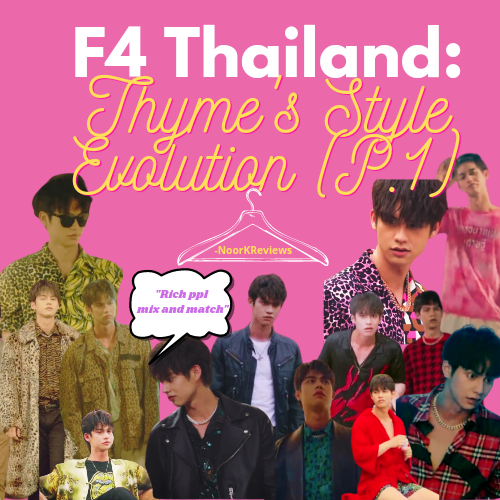

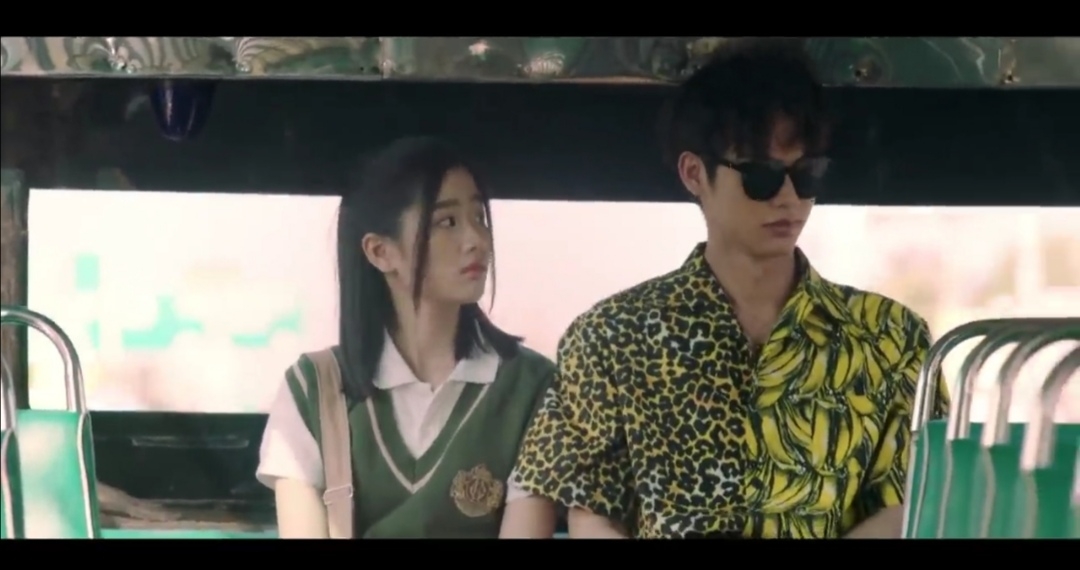






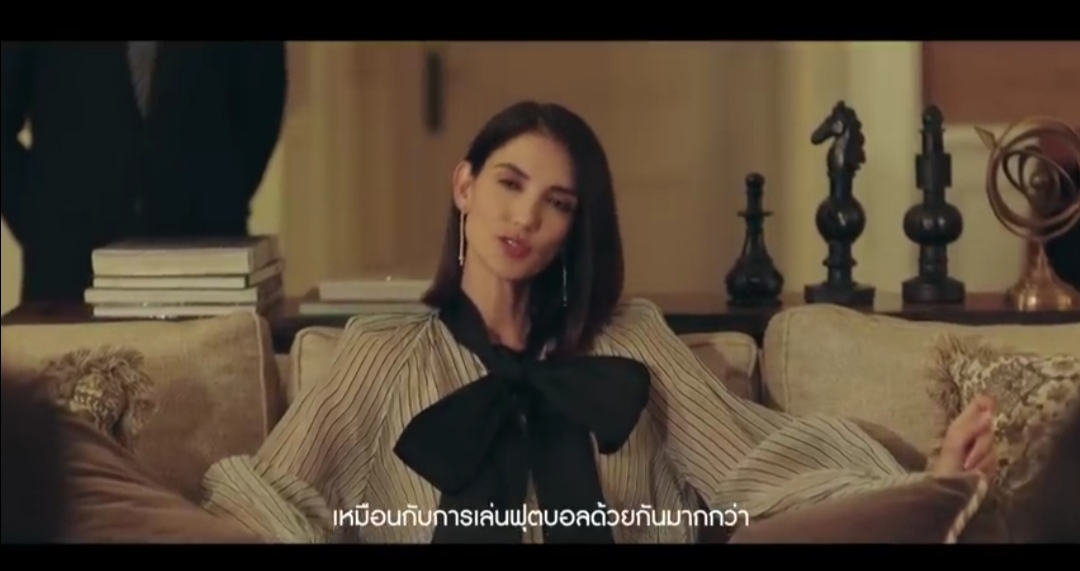








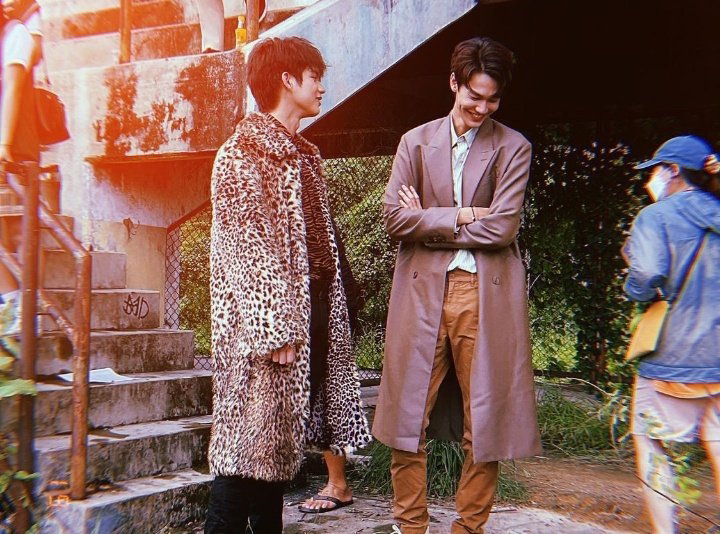



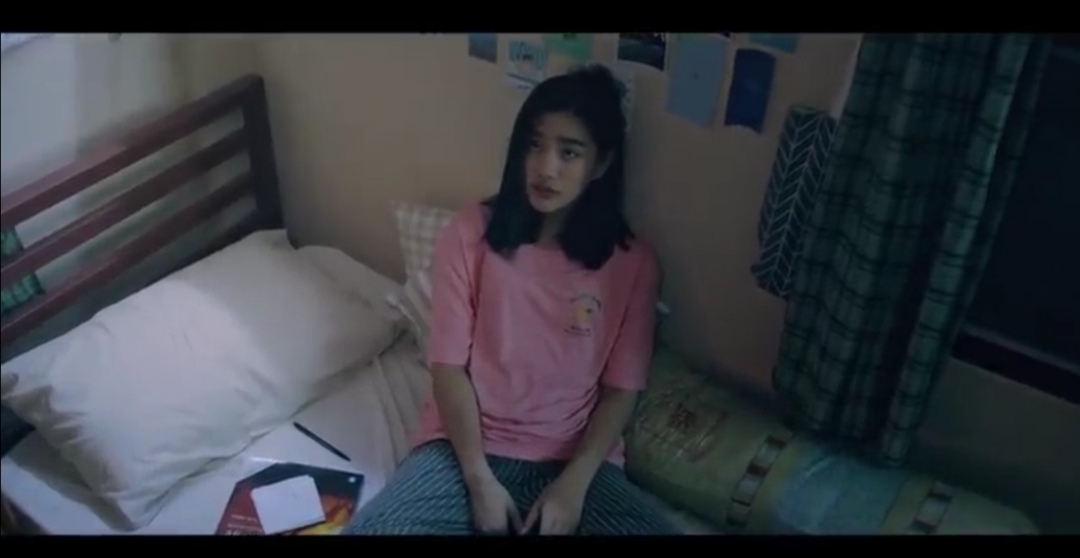


Hiya! Thank you so much for sharing my post! What a nice way to discover your blog, I really enjoyed this 😂
ReplyDeleteThe tiger shirt is particularly iconic for me 👌
Hi!! It was my pleasure I loved reading your posts about the show!
DeleteAnd yes the Tiger shirt has been on my mind since the episode aired😩